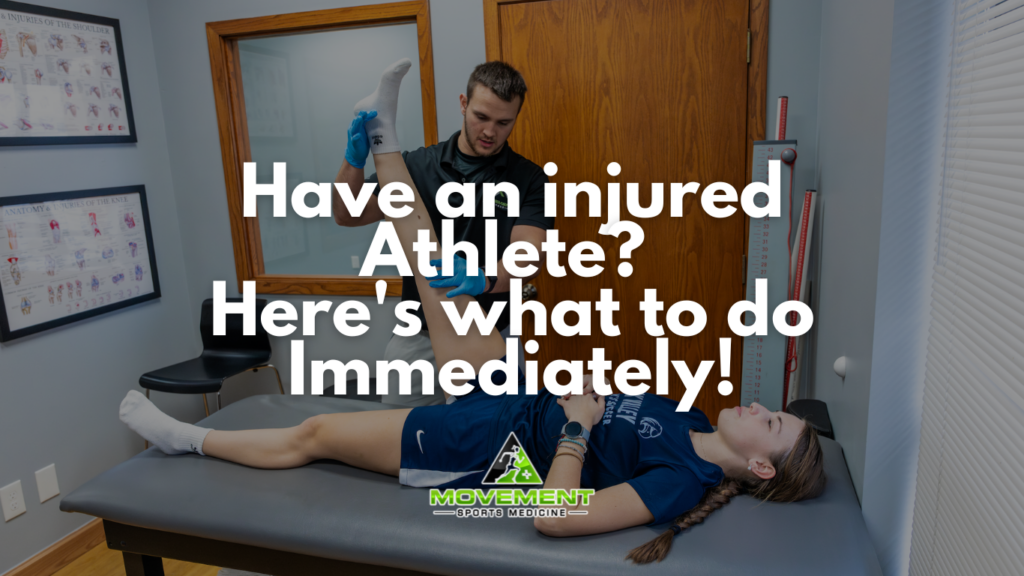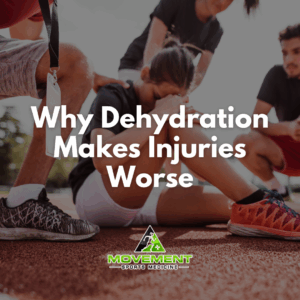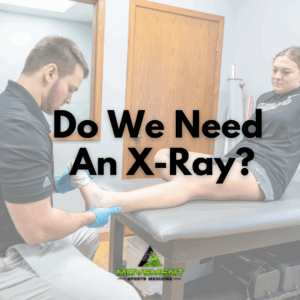Have an injured Athlete? Here’s what to do Immediately!
Why the First 72 Hours Matter
The first 72 hours after an injury are crucial for setting the stage for a strong return, no matter what type of injury.
What you do or don’t do in those first three days can determine whether you return in a few weeks at 100%, or you now have a nagging body part that hurts for the rest of your life, which can lead to a much larger injury.
The First 24 Hours…
Immediately after an injury, you need to:
- Put a compression sleeve on to manage inflammation
- Elevate the body part above your heart as much as possible.
- Move the joint as much as possible without pain, even small movements.
This is the acute inflammatory phase of healing. It’s your body’s initial response to trauma. We need inflammation to heal correctly, but we don’t want too much. Control is the name of the game when it comes to inflammation.
Should I ice it?
I DO NOT recommend icing an injury that is not traumatic or post-surgical. Icing constricts our blood vessels, slowing the metabolic processes needed in this acute phase. It also inhibits our natural inflammatory response.
Don’t try to “tough it out.”
Athletes are tough! We want them to battle through adversity, but pushing through pain is different and can lead to several issues. If you are hurt, doing the right thing in the short-term will have a massive impact on your long-term results.
What to Do in the First 72 Hours
You need some P.E.A.C.E. in your life after an injury.
Protect, Elevate, Avoid Anti-inflammatory Medication, Compression, and Education
Protect
Protect the injury by avoiding painful movement. Use a brace, a sling or crutches. Whatever is necessary to keep you moving without pain.
Elevate
Elevate the body part ABOVE YOUR HEART in 20-minute intervals as much as possible. Ideally, this would be lying on a flat surface (bed or couch) with a pillow under your ankle or knee. Sitting in a recliner with a pillow under your foot is NOT the same, because your lower body is not above your heart!. You need to manage the inflammation and remove any unnecessary waste products in the area.
Avoid Anti-inflammatories
The body’s initial response to injury is inflammation, and that’s not a bad thing. The initial inflammation helps to:
- Increase blood flow and send healing cells to the area.
- Clears out damaged tissue and starts the repair process.
Suppressing inflammation too early can interfere with tissue regeneration. We don’t want to inhibit this process, especially when these drugs disrupt tendon and ligament rebuilding, muscle regeneration, and the long-term quality of the tissue.
Compression
Compression is great for controlling the inflammation in the injury and is best when paired with elevation. Controlling rather than stopping inflammation is the key here. Compression also helps reduce secondary injury by adding support and not allowing too much fluid to overload blood vessels.
Education
Learning how your body feels and what is going on is important if you want to return to your previous ability. Also, understanding and communicating how you are feeling is important. No one can feel what you are feeling. If you cannot effectively communicate what you are experiencing, the people trying to help you are at a disadvantage.
At Movement Sports Medicine
- We understand time is of the essence when dealing with injuries. Everyone wants to get back fast and at 100%.
- We provide a plan to make a full return while reducing the risk of reinjury or secondary injury.
- We help make decisions on the next steps, whether referring out for an X-ray or recovery sessions to care for what you need.
Remember:
The first 72 hours aren’t about doing nothing but the right things at the right time.
If you have an athlete that is injured, give us a call at (815) 374-3200 to see how we can help them recover well and get back out on the field or court in a safe and effective manner!
Be Great Today,
Mason



